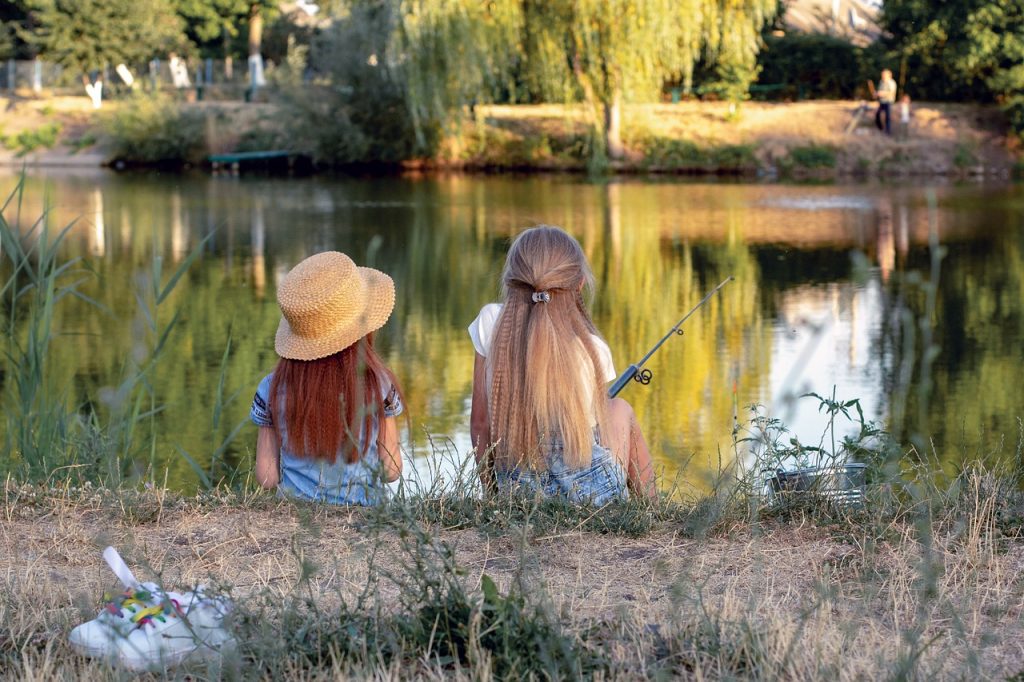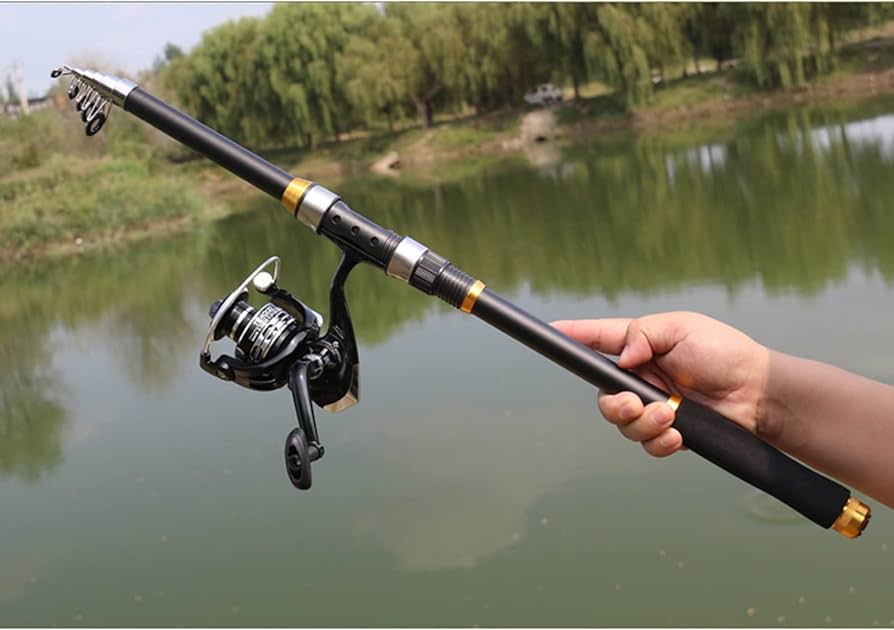(Photo from Harrison Fitts | pexels.com)
Embarking on a kayak fishing expedition is an exciting endeavor, but it requires meticulous preparation. Your first priority should be the selection of an appropriate kayak. It’s not just about having a kayak but choosing one tailored for fishing. These specialized kayaks are engineered to provide the stability and features essential for anglers. The sit-on-top models, in particular, have gained immense popularity. Their design offers a wider platform, ensuring better stability, which is crucial when you’re focused on fishing.
Getting Started: Essential Gear and Safety Measures
Setting out on a kayak fishing journey is both thrilling and challenging. However, before diving into the waters, ensuring you have the right equipment is paramount. The kayak serves as your vessel, your platform for exploration. Hence, it’s vital to select a model that aligns with your fishing aspirations. Fishing-specific kayaks, especially the sit-on-top variants, are revered for their inherent stability. Their design not only keeps you balanced but also ensures you can maneuver effortlessly, making your fishing experience both productive and enjoyable.
Comfort, often overlooked, plays a pivotal role in determining the success of your fishing expedition. After all, hours on the water can take a toll on your body. Thus, the significance of a well-designed seat cannot be stressed enough. An adjustable seat, tailored for prolonged use, ensures that discomfort doesn’t hamper your fishing enthusiasm. With the right seat, you can focus entirely on the waters below, patiently waiting for the prized catch without the distraction of discomfort.
While equipment is crucial, safety remains paramount. At the heart of any kayak fishing expedition lies the need for precaution. The serene waters, though tranquil at a glance, can hide potential risks beneath their surface. Thus, before embarking on any adventure, it’s imperative to acquaint yourself with local regulations. By doing so, you not only remain compliant with the law but also fortify your preparedness for any unforeseen challenges.
Furthermore, the value of a Personal Flotation Device (PFD) cannot be overstated. It serves as a crucial safety net, even for those confident in their swimming abilities. Pairing a PFD with a visibility flag for your kayak further amplifies safety measures. This ensures that other boaters can easily discern your presence, minimizing collision risks. Above all, the importance of communication cannot be emphasized enough. Always ensure someone trustworthy is aware of your plans and expected return time. This simple precaution can be an invaluable lifeline in times of emergencies.
Mastering the Techniques: Tips for Success
While basic paddling is foundational, nuances elevate skills. Master efficient strokes early. They’re pivotal for energy conservation. As you grow, explore advanced techniques. Strokes like sweep and draw offer versatility. Different waters demand different approaches. Continual practice sharpens prowess. Embrace diverse conditions; they refine adaptability.
Casting is where strategy meets skill. Repetition hones precision. From your kayak, perfect your technique. Kayak confines challenge; adapt and innovate. Prioritize lightweight, durable fishing gear. It promises prolonged comfort and efficiency. Deep dive into fish behavior studies. Understanding habits inform effective bait choices. Research, learn, and stay updated.
In kayak fishing, tenacity is your ally. Challenges test, but they also teach. Fluid conditions demand flexibility. Learn to read environmental cues. They’re your silent mentors. Seek mentorship; experienced anglers offer golden nuggets. Attend workshops, join communities and share experiences. Celebrate every progress, no matter how small. Mastery isn’t overnight; savor the journey.
Choosing the Right Location and Timing
Your kayak fishing locale matters immensely. Begin with thorough research. Identify local fishing hotspots. Focus on areas teeming with fish. Coastal zones, lakes, and serene rivers beckon kayak anglers. Their charm lies in diverse fish species and scenic beauty. Prioritize understanding water dynamics. Depth, structure, and current shape your fishing experience. Tailor your location choice to your preferences.
Timing isn’t just about the clock; it’s a strategy. Fish have feeding rhythms. Factors like temperature and lunar phases influence them. Mornings and evenings are fish’s peak activity times. These hours often yield better catches. Yet, variability is nature’s essence. Experiment with timings. Gauge fish behavior under different conditions. Flexibility enhances your angling success.
Choosing the right spot and time intertwines skill and intuition. It’s an art perfected over time. Listen to seasoned anglers’ advice. Their insights can be invaluable. Attend local fishing seminars or workshops. They broaden your knowledge base. Remember, every water body has its secrets. Discovering them adds to your angling tales. Enjoy the process; each trip enriches your experience.
Gear Maintenance: Ensuring Longevity and Performance
Every seasoned kayak angler knows that gear maintenance is as crucial as the initial purchase. After all, well-maintained equipment not only performs better but also enhances safety on the water. To begin, start with a routine cleaning regimen for your kayak. Particularly when exposed to saltwater, a thorough rinse after each outing becomes imperative due to its corrosive nature. Furthermore, delve deeper into maintenance by regularly inspecting for signs of wear and tear. Components such as the rudder or pedal system, pivotal to your kayaking experience, demand special attention.
Additionally, the lubrication of moving parts isn’t just a suggestion—it’s a necessity. This guarantees smooth operation and reduces the risk of malfunctions. When your gear is not in use, it’s essential to store it in a conducive environment. A dry, shaded area is optimal as it prevents sun damage and prolongs equipment lifespan.
Lastly, always prioritize periodic professional inspections. With expert eyes at play, potential issues can be identified and addressed early on, ensuring your kayak remains in prime condition. In essence, a well-maintained kayak not only boosts performance but also guarantees a safer and more enjoyable fishing adventure.
Navigating Challenges: Overcoming Common Hurdles
The Kayak fishing journey is both exhilarating and challenging. As one navigates the waters, numerous obstacles arise. From shifting weather conditions to the elusive nature of fish, challenges are ever-present. However, armed with the right mindset and tools, these hurdles can be transformed into growth opportunities. To begin with, it’s essential to stay updated with accurate weather forecasts. This proactive approach ensures safety remains a top priority.
Moreover, investing in a reliable GPS is invaluable. Such a tool aids navigation, especially when exploring unfamiliar waters. If the fish seem unresponsive, consider experimenting with diverse baits or lures. Another beneficial step is joining a local kayak fishing club. Here, collective wisdom and shared experiences often unlock new insights. Always remember, that every challenge encountered serves as a lesson in disguise. By embracing these situations, adapting strategies, and demonstrating resilience, one can truly evolve and excel in the art of kayak fishing.
Community and Conservation: Being a Responsible Angler
In the realm of kayak angling, one’s role extends beyond the pursuit of fish; it encompasses a broader responsibility towards nature. Recognizing this, every angler should embrace the ethos of responsible fishing. Central to this is the commitment to catch-and-release practices, particularly for species teetering on the brink of endangerment. Equally crucial is the conscious effort to reduce environmental impact. Every piece of waste, no matter how small, holds significance.
Therefore, it’s imperative to adopt sustainable disposal practices, ensuring our waters remain pristine. Beyond individual actions, active participation in local conservation initiatives amplifies impact. These platforms not only provide opportunities to contribute but also foster a deeper connection with nature. Additionally, fostering camaraderie within the angling community is pivotal. By sharing experiences, insights, and best practices, we fortify a culture of mutual respect and collaboration. As custodians of our waterways, it falls upon us to act responsibly today, ensuring the beauty and bounty of nature endure for generations to come.
(Photos from Dan Hadley | pexels.com)
Conclusion about Kayak Fishing For Beginner
Embarking on the adventure of kayak fishing as a beginner may initially appear daunting. However, with dedication, the journey unfolds into a profoundly rewarding experience. Starting with the basics and gradually advancing, every step offers its lessons and joys. Importantly, by investing in quality gear, you lay a solid foundation for your angling pursuits. Coupled with prioritizing safety, these measures ensure both enjoyment and peace of mind on the water.
Additionally, mastering essential techniques, though requiring patience, amplifies your success rate. Furthermore, the choice of kayak fishing locations significantly influences the experience’s quality. It’s worth noting that kayak fishing transcends mere angling. It encapsulates moments of serenity, lessons learned, and memories created. The rhythmic paddling, the anticipation of a bite, and the thrill of the catch are all integral parts of this journey. So, as you prepare to hook your first fish this weekend, relish the process. Each trip, each cast, and each catch contributes to your growth as an angler. In the end, remember that while the catch is exhilarating, the journey and the lessons it brings are equally, if not more, valuable. Here’s to many successful and fulfilling kayak fishing adventures ahead!
Frequently Asked Questions about Kayal Fishing
- What is the meaning of kayak fishing?
- Kayak fishing is fishing from a kayak. The kayak has long been a means of transportation and a means of accessing fishing grounds.
- What is the best bait for kayak fishing?
- Good bait options include a Texas rigged worm, soft-plastic jerk bait, jig, spinnerbait, square-bill crank bait, and popper.
- What makes a fishing kayak?
- Generally, they’re sit-on-top kayaks with built-in rod holders and storage.
- How do I choose a kayak fishing location?
- Consider factors like water depth, fish species, accessibility, and local regulations.
- What should I do if my kayak capsizes?
- Stay calm, hold onto your paddle and kayak, and try to climb back in or signal for help.
- How do I handle caught fish in a kayak?
- Use a net if possible, and handle the fish gently to minimize stress and potential harm.
- Are there any local regulations I should be aware of?
- Always familiarize yourself with local fishing regulations, permits, and catch-and-release guidelines.
- How do I store and transport my kayak?
- Store your kayak in a dry, shaded area, and use proper racks or straps when transporting it.
- What are some basic kayak fishing techniques to learn?
- Start with paddling efficiently, casting accurately, and understanding fish behavior.
10. Can I kayak fish alone?
- While solo fishing is possible, it’s advisable to always inform someone about your plans and consider going with a buddy when possible.
Additional Resources:
1. Fishing-specific kayaks – https://www.divein.com/kayaking/fishing-kayak/
2. Personal Flotation Device (PFD) – https://www.precision-performance.com/blog/5-types-of-pfds-personal-flotation-devices–23269
3. Different waters demand different approaches – https://www.mdpi.com/2071-1050/10/10/3466
4. diverse fish species – https://en.wikipedia.org/wiki/Diversity_of_fish
5. GPS – https://en.wikipedia.org/wiki/Global_Positioning_System
Read out our latest blog on Cheap Kayak Fishing Setup: Gear Up Without Breaking the Bank


